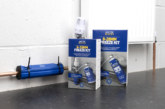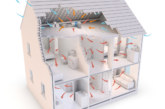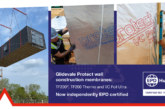
The Chartered Institution of Building Services Engineers (CIBSE) has revised its Technical Memorandum 23: Testing buildings for air leakage to take account of regulatory changes and advances in best practice.
The new edition of CIBSE TM23 is cited in the Building Regulations as the approved method for air permeability testing of homes. It takes account of the inclusion of low-pressure pulse (LPP) testing as a means of assessing the air permeability of new homes in demonstrating compliance with Part L of the Building Regulations.
LPP is as an alternative method to the current fan pressurisation (blower door) test method for measuring a building’s air permeability. It uses a lower pressure differential of 4 Pascals, rather than the 50 Pascals reference pressure of the blower door method.
As the LPP method is a relatively new technique, there is currently no existing national or international standard covering the method and associated calibration requirements. In advance of such standards being developed, TM23 seeks to provide the overarching methodology principles and framework for regulatory compliance purposes.
Julie Godefroy, CIBSE Head of Sustainability said: “CIBSE Technical memoranda offer guidance on recommended practices when dealing with new or rapidly changing techniques and technologies. The update to TM23 ensures that engineers and designers have access to the latest information and guidance on testing building air permeability”.








